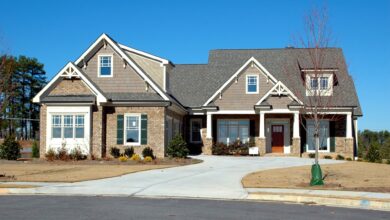Optimizing CNC Machining Processes for Energy Efficiency: Key Strategies
In this day and age, energy productivity is a first concern for enterprises hoping to decrease their ecological impression and working expenses. CNC (PC Mathematical Control) machining, a typical assembling technique utilized in different ventures, is no exemption. Optimizing CNC machining processes for energy efficiency not only contributes to sustainability but also improves profitability. In this article, we will explore key strategies to achieve energy-efficient CNC machining.
nnnn1. Select Efficient CNC Machines
nnnnThe most vital phase in improving energy proficiency in CNC machining is to pick the right hardware. Present day CNC machines are planned in light of energy effectiveness. Look for machines with features like regenerative drives, efficient motors, and energy-saving modes. These advancements can significantly reduce energy consumption during operation.
nnnn2. Precision Tool Selection
nnnnSelecting the appropriate cutting tools is crucial for energy efficiency. Precision tools reduce the need for additional passes, minimizing machining time and energy consumption. Additionally, high-quality tool coatings and materials can improve tool life, reducing the frequency of tool changes and the associated energy costs.
nnnn3. Optimize Cutting Parameters
nnnnFine-tuning cutting parameters such as speed, feed rate, and depth of cut can greatly impact energy efficiency. Machinists should conduct tests and experiments to find the optimal combination of parameters that balances cutting speed with energy consumption. Additionally, using adaptive control systems can help adjust cutting parameters in real-time, further optimizing efficiency.
nnnn4. Minimize Idle Time
nnnnOne often overlooked aspect of CNC machining is idle time. Reducing idle time between tool changes, workpiece loading, and unloading energy CNC precision machining significantly improve energy efficiency. Efficient workpiece handling systems and automated tool changers can help minimize downtime, ensuring that the machine operates at its maximum potential.
nnnn5. Implement Advanced Software Solutions
nnnnAdvanced CAM (Computer-Aided Manufacturing) software can generate toolpaths that minimize unnecessary movements and reduce air cutting. These software solutions can also provide real-time monitoring and analysis of machining processes, allowing operators to make immediate adjustments to improve energy efficiency.
nnnn6. Embrace Lean Manufacturing Principles
nnnnAdopting lean manufacturing principles can help optimize CNC machining processes for energy efficiency. Reducing waste, streamlining workflows, and eliminating bottlenecks can all contribute to energy savings. Implementing a continuous improvement mindset ensures that energy efficiency remains a priority over time.
nnnn7. Regular Maintenance and Calibration
nnnnRegular maintenance and calibration of CNC machines are essential for energy efficiency. Appropriately kept up with machines work all the more productively and utilize less energy. This incorporates checking for mileage, guaranteeing legitimate grease, and adjusting the machine’s parts for ideal execution.
nnnn8. Monitor Energy Consumption
nnnnImplementing energy monitoring systems can provide valuable insights into CNC machining energy usage. By tracking energy consumption, manufacturers can identify areas where improvements can be made and set benchmarks for energy efficiency goals.
nnnn9. Invest in Renewable Energy Sources
nnnnFor a more economical way to deal with CNC machining, consider putting resources into environmentally friendly power sources, for example, sunlight based chargers or wind turbines to control your assembling office. This diminishes the natural effect as well as lead to long haul cost reserve funds.
nnnn10. Employee Training and Engagement
nnnnIn conclusion, representative preparation and commitment are basic for improving CNC machining processes for energy proficiency. Guaranteeing that machine administrators and upkeep staff are learned about energy-saving practices and took part in energy preservation endeavors can have a massive effect.
nnnnAll in all, upgrading CNC machining processes for energy proficiency is a complex methodology that includes choosing the right hardware, calibrating boundaries, and embracing present day innovation. By executing these key techniques, makers can decrease energy utilization, lower working expenses, and add to a more feasible future. Energy-effective CNC machining benefits the climate as well as improves seriousness in the worldwide assembling industry.
n


